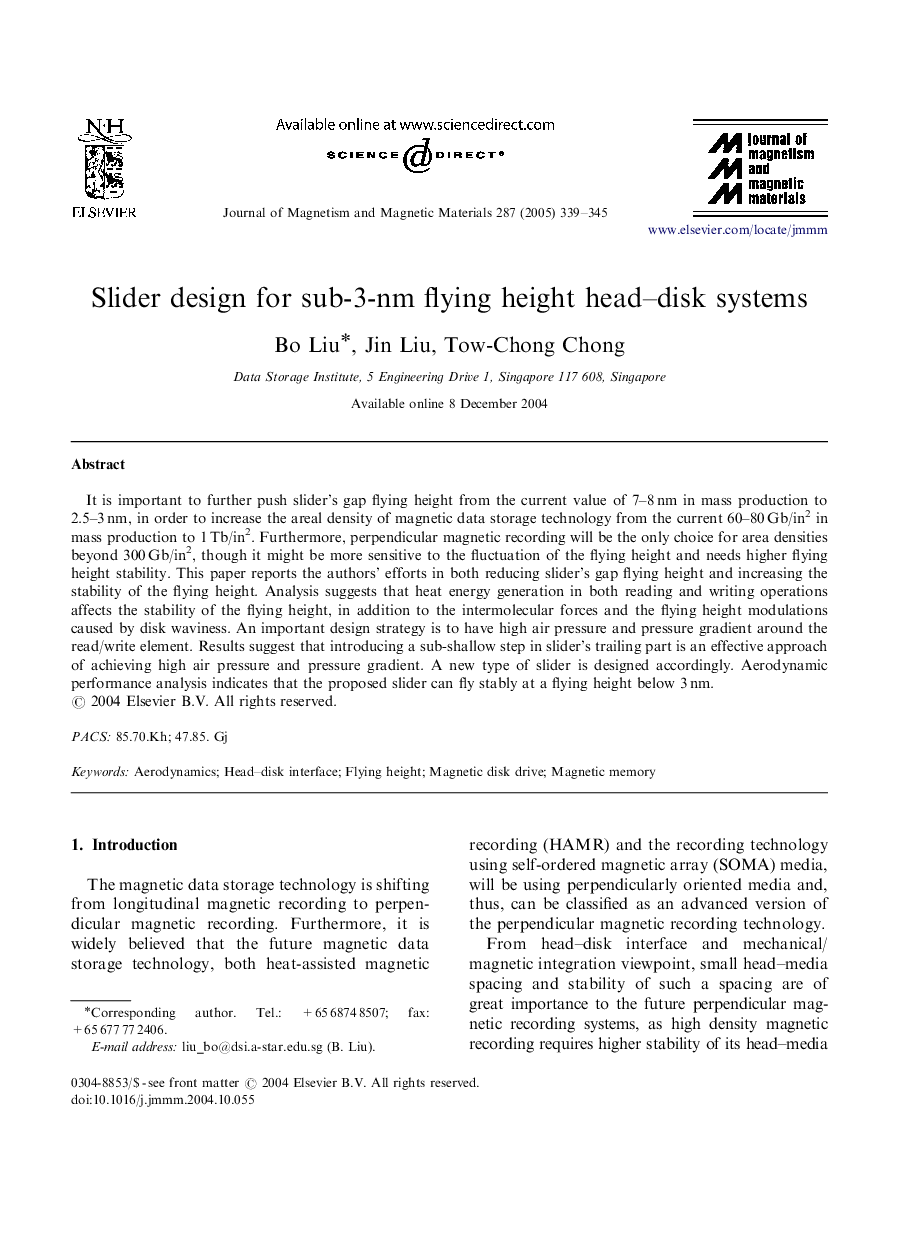| Article ID | Journal | Published Year | Pages | File Type |
|---|---|---|---|---|
| 9834552 | Journal of Magnetism and Magnetic Materials | 2005 | 7 Pages |
Abstract
It is important to further push slider's gap flying height from the current value of 7-8Â nm in mass production to 2.5-3Â nm, in order to increase the areal density of magnetic data storage technology from the current 60-80Â Gb/in2 in mass production to 1Â Tb/in2. Furthermore, perpendicular magnetic recording will be the only choice for area densities beyond 300Â Gb/in2, though it might be more sensitive to the fluctuation of the flying height and needs higher flying height stability. This paper reports the authors' efforts in both reducing slider's gap flying height and increasing the stability of the flying height. Analysis suggests that heat energy generation in both reading and writing operations affects the stability of the flying height, in addition to the intermolecular forces and the flying height modulations caused by disk waviness. An important design strategy is to have high air pressure and pressure gradient around the read/write element. Results suggest that introducing a sub-shallow step in slider's trailing part is an effective approach of achieving high air pressure and pressure gradient. A new type of slider is designed accordingly. Aerodynamic performance analysis indicates that the proposed slider can fly stably at a flying height below 3Â nm.
Related Topics
Physical Sciences and Engineering
Physics and Astronomy
Condensed Matter Physics
Authors
Bo Liu, Jin Liu, Tow-Chong Chong,
